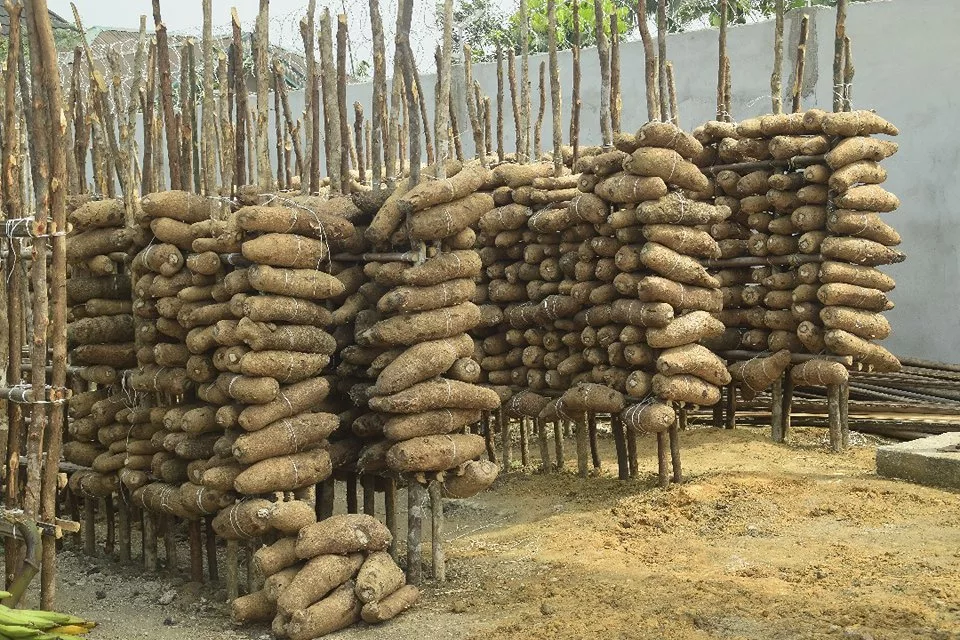In the heart of traditional farming practices lies a time-honoured technique known as “Burying Yam for Storage”, which some farmers refer to as mulching. Picture this: a sun-dappled landscape where farmers, with weathered hands and a wealth of experience, engage in the art of preserving yams to prolong shelf life. The ritual begins with the careful excavation of a shallow pit in the earth, a process that connects hands to soil and tradition.
Under the protective embrace of ancient trees, the farmers meticulously heap the yams in the dugout space, creating a symphony of earthy colors and textures. To shield their precious harvest from the elements, they cover the mound with a rustic blanket of dry grass, or dry leaves from cover crops; this defining the simplicity that defines this traditional storage method. While modern advancements have introduced alternative storage techniques, this age-old practice endures as a low/no-cost sanctuary for yams, preserving them against the relentless march of time. Farmer Albert Ukaeke, a veteran in the agricultural realm with over two decades of toil in the fields, explains that the genius of this method lies in its ability to restrict ventilation, providing a haven where yams can resist spoilage or rodent’s attack.
This storage method is usually embraced during the dry season. Farmer Ukaeke shares the insight that when yams reach maturity, signaling the dawn of the dry season, a transformation occurs. The once-vibrant vegetative growth halts, leaves wear a golden hue, and the yam vine channels its essence into the tuber, ushering it into a restful dormancy. This physiological maturation, unfolds over 8 to 11 months post-planting, marking the yams as ripe for the harvest. In this dance of tradition and nature, the harvesting itself is an art. Wooden spades and digging sticks become extensions of the farmer’s hands, wielded with a tenderness that befits the precious bounty beneath the soil. Every yam, carefully unearthed, is a testament to the farmer’s skill, care, and respect for the cycle of growth that echoes through generations. And so, under the watchful gaze of ancient trees, the tradition endures – yams cradled in the earth, and covered, gives a nod to the past, and a link to the future.




1 Comment
Nice article